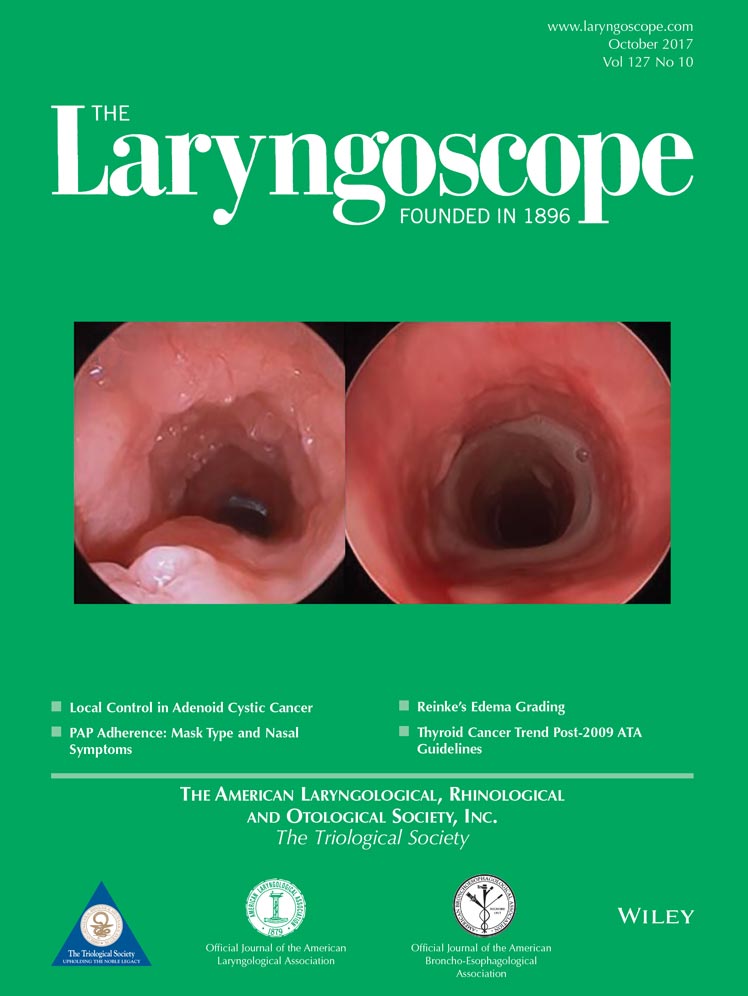Magnetic resonance imaging of intratympanic gadolinium helps differentiate vestibular migraine from Ménière disease
The authors have no other funding, financial relationships, or conflicts of interest to disclose.
This study was supported by Natural Science Foundation of Shanghai (14ZR1405300).
Abstract
Objectives/Hypothesis
To study the differential diagnosis of vestibular migraine (VM) and Ménière disease (MD) by using magnetic resonance imaging (MRI) of intratympanic gadolinium.
Study Design
Prospective cohort study.
Methods
Definite MD patients (n = 30) and definite or probable VM patients (n = 30) were included, and the two groups were age and sex matched. Three-dimensional real inversion recovery (3D-real-IR) MRI was performed 24 hours after bilateral intratympanic gadolinium to assess the presence and degree of endolymphatic hydrops (EH). Response rates, amplitudes, latency, and response threshold of cervical and ocular vestibular evoked myogenic potentials (c/oVEMPs) were tested by using air-conducted sound. Pure tone audiometry was used to evaluate the level of hearing loss.
Results
Different degrees of EH were observed in the cochlea and vestibule in the affected ears of MD patients, but only suspicious cochlear hydrops and no vestibular hydrops was noted in the VM patients. The correlation between the degree of EH and low-frequency hearing loss was statistically significant. Only the response threshold for c/oVEMP differentiated the MD-affected side from VM. The latency and amplitude for c/oVEMP showed no significant difference between groups.
Conclusions
Characteristic pathological changes of MD include EH in the inner ear, and 3D-real-IR MRI helps differentiate VM from MD. VM and MD behaved similarly in vestibular dysfunction and their transduction pathway, but MD appeared to be more severe than VM. An association in their pathophysiology may play a part in these responses.
Level of Evidence
4 Laryngoscope, 127:2382–2388, 2017




